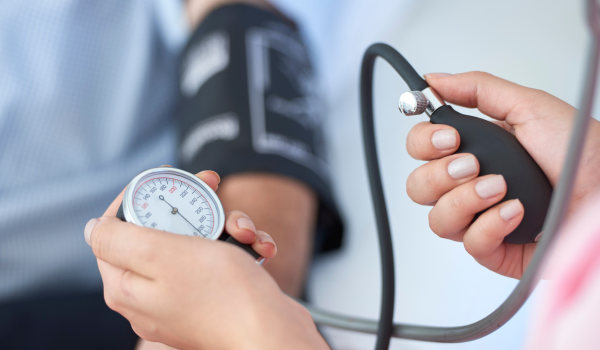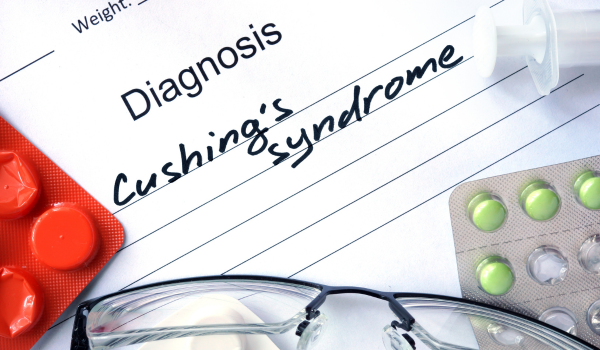
Understanding Risk
Cushing’s syndrome is a hormonal disorder that occurs when the body is exposed to high levels of cortisol for an extended period. Cortisol is essential for regulating metabolism, controlling inflammation, and responding to stress. But when it remains elevated, the hormone disrupts the body’s balance and leads to serious health problems.
Because the symptoms develop gradually and resemble more common conditions, identifying who is most at risk is an important step in prevention and early diagnosis. Knowing the risk groups helps doctors monitor vulnerable patients and encourages individuals to seek timely evaluation if suspicious signs appear.
Medication-Related Risk
One of the biggest risk groups includes people who use corticosteroid medications for chronic conditions. These drugs are often prescribed for:
-
Asthma and chronic obstructive pulmonary disease (COPD)
-
Rheumatoid arthritis and lupus
-
Inflammatory bowel diseases such as Crohn’s disease
-
Skin conditions like eczema or psoriasis
-
Organ transplant rejection prevention
When taken in high doses or over long periods, corticosteroids can mimic the effects of cortisol in the body. This can lead to iatrogenic Cushing’s syndrome, which is the most common form of the condition.
The risk is higher for patients using oral or injected steroids compared to topical or inhaled forms. Doctors often try to prescribe the lowest effective dose, but people requiring long-term therapy should be carefully monitored.
Women and Gender Differences
Cushing’s syndrome affects both men and women, but statistics show that women are diagnosed more frequently, particularly between the ages of 20 and 40.
Reasons for this increased risk include:
-
Higher likelihood of developing pituitary adenomas (benign tumors that drive Cushing’s disease).
-
Hormonal fluctuations during reproductive years, which may influence how the body responds to cortisol.
-
Greater frequency of autoimmune conditions in women, which often require corticosteroid treatment.
Although women make up the majority of cases, men are more likely to present with ectopic ACTH-producing tumors, which can cause a faster and more aggressive onset of symptoms.
Age Factors
Cushing’s syndrome can occur at any age, but certain age groups face higher risks:
-
Adults between 20 and 50 years old are most commonly affected, especially by pituitary-related causes.
-
Children and adolescents may also develop Cushing’s syndrome, but their symptoms often differ, with slowed growth and delayed puberty being more prominent.
-
Older adults may be misdiagnosed, since symptoms like weight gain, high blood pressure, and diabetes can be attributed to aging.
Age influences both the likelihood of developing the syndrome and the way symptoms manifest, which makes awareness across age groups essential.
Genetic Predisposition
Though rare, inherited conditions increase the risk of Cushing’s syndrome. These include:
-
Multiple Endocrine Neoplasia type 1 (MEN1): Causes tumors in hormone-producing glands.
-
Familial Isolated Primary Pigmented Nodular Adrenocortical Disease (PPNAD): A condition that disrupts adrenal gland function.
-
Carney complex: A genetic disorder involving skin changes and endocrine tumors.
Individuals with a family history of these syndromes are considered at higher risk and may benefit from regular screening.
Pituitary Tumor Risk
People with a tendency to develop pituitary adenomas are at greater risk of Cushing’s disease, a form of the syndrome specifically linked to the pituitary gland.
Risk factors include:
-
Genetic conditions that predispose to pituitary growths.
-
Prior history of pituitary tumors.
-
Age and gender (women in early adulthood face higher risk).
Since pituitary tumors often grow slowly and symptoms accumulate over years, these patients require careful long-term monitoring.
Adrenal Tumor Risk
The adrenal glands, located above the kidneys, can also produce excess cortisol when tumors form. Risk groups include:
-
Individuals with a family history of adrenal tumors.
-
Patients with genetic conditions affecting adrenal growth.
-
Adults between 40 and 60, when adrenal tumors are more likely to appear.
While most adrenal tumors are benign, even small adenomas can cause major hormonal disruptions. Malignant adrenal carcinomas are rare but pose serious health risks.
Ectopic ACTH Risk
Some cancers and tumors located outside the pituitary and adrenal glands produce ACTH abnormally, driving excess cortisol. This ectopic ACTH production is most common in:
-
Smokers, particularly those at risk for small cell lung cancer.
-
Adults over 40, when lung and pancreatic cancers are more prevalent.
-
People with a history of neuroendocrine tumors.
This form of Cushing’s syndrome tends to develop rapidly and may cause more severe symptoms than pituitary or adrenal causes.
Chronic Illness and Stress
While stress itself does not directly cause Cushing’s syndrome, individuals with chronic illnesses requiring steroid therapy are at higher risk. Examples include:
-
Autoimmune diseases such as lupus or multiple sclerosis.
-
Long-term inflammatory conditions like arthritis.
-
Chronic respiratory diseases that require frequent steroid use.
These patients face a dual challenge: the underlying illness and the potential for treatment-induced hormone imbalance.
Children at Risk
Children are a special risk group, not because of lifestyle factors but due to:
-
Prolonged steroid use for conditions like asthma or juvenile arthritis.
-
Adrenal or pituitary tumors that alter hormone production.
-
Genetic conditions inherited from family.
In children, symptoms such as slowed growth, delayed puberty, or unusual weight gain should be taken seriously, as they may point to early hormonal disturbances.
Undiagnosed or Misdiagnosed Groups
Certain groups are at risk of delayed diagnosis because their symptoms overlap with common disorders:
-
Obese patients may have their weight gain attributed to diet or inactivity.
-
Diabetic patients may have blood sugar problems blamed only on lifestyle.
-
Postmenopausal women may have bone weakness and mood changes mistaken for natural aging.
These overlaps highlight the importance of thorough hormonal evaluation when standard treatments fail to explain ongoing health problems.
Lifestyle Influences
Lifestyle alone does not directly cause Cushing’s syndrome, but certain habits increase risks indirectly:
-
Smoking raises the likelihood of lung cancers that may secrete ACTH.
-
Long-term alcohol abuse can mimic some hormonal changes, confusing diagnosis.
-
Poor management of chronic illnesses requiring steroids increases the chance of overexposure.
These lifestyle factors make some groups more vulnerable to developing or masking Cushing’s syndrome.
Why Risk Awareness Matters
Identifying risk groups allows for:
-
Early screening: Regular cortisol tests for high-risk patients.
-
Preventive measures: Using the lowest possible steroid dose for chronic therapy.
-
Quicker diagnosis: Recognizing red flags among vulnerable populations.
-
Better outcomes: Patients treated early have lower risks of complications.
By raising awareness of who is most vulnerable, doctors and patients alike can take steps toward earlier intervention and more effective treatment.

.png)
.png)
.png)


